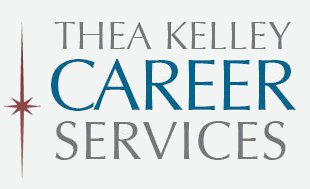 Used correctly, job interview “extras” such as portfolios, presentations and 30/60/90-day plans can make your interview more memorable and convincing – and make you stand out as the candidate who goes the extra mile.
Used correctly, job interview “extras” such as portfolios, presentations and 30/60/90-day plans can make your interview more memorable and convincing – and make you stand out as the candidate who goes the extra mile.
Portfolios aren’t just for artists.
Portfolios – whether online or physical – aren’t just for “creative” professionals like graphic designers and copywriters. If the quality of your work can be demonstrated by several of the following items, consider assembling them into a binder or computerized presentation.
You might include:
- Samples of work or summaries of projects
- Writing samples
- Kudos
- Awards
- Letters of recommendation
- Positive performance reviews
- Graphs, charts or other infographics
- Certificates, licenses or transcripts
- Resume, cover letter and references
- And what else? Use your imagination and good judgment.
Use an attractive binder – don’t skimp! – and place each item in a page protector, perhaps with copies to share behind each original. Or design the portfolio to be left with the interviewer. (Do not impose on them to return it to you afterwards! Keep a copy for yourself.)
If you have only one item or two extra items to show, for example a letter of recommendation and a list of references, you can simply provide these to the interviewer along with your resume.
Consider a mini-presentation with your tablet or laptop.
Some interviews require that you give a presentation – but if it’s not required, why not be the only candidate who prepared one?
This can be especially effective if presentation skills are relevant to the job, or if some of your skills – for example, web design – lend themselves well to online presentation.
Do not ask to use the employer’s presentation equipment. Keep your use of technology simple and seamless. A tablet computer may be the best choice, because it’s easy to hand back and forth. And make sure your battery is fully charged; don’t search around for an outlet to plug into.
Any unasked-for presentation should be very brief. It could be anywhere from a quick reference to one particularly telling infographic, or a multi-slide presentation the length of a typical interview answer (which you may recall, I suggest limiting to a minute or two).
Introduce the presentation as a way of answering a question that has been asked. “To answer that question, I’d like to show you a one-minute presentation I’ve prepared on my tablet. All right?”
Remember that applications like PowerPoint, Keynote, Prezi or Google Slides are only as effective as your use of them. Spend at least a few minutes reading up on smart presentation design in terms of font sizes, balance of text versus images, color, and so on.
Is a 30/60/90-day plan appropriate for you?
This tool is typically used by executives, managers and sales or marketing professionals, but it could be effective for others as well. The plan shows what you would accomplish in your first three months on the job, and the purpose is to demonstrate that you fully understand the role, have good ideas about how to perform it, and are highly motivated – driven – to excel in it.
Craft and present this toward the end of the interview process, after completing at least an interview or two, when you’ve gained detailed knowledge of the challenges, resources and expectations involved in the position.
Expect to spend a number of hours researching the company and its environment, writing the plan, and developing a polished document or electronic presentation.
Since you’re not yet on the job, the plan will necessarily be tentative, and may include mention of additional information you would seek or alternative courses of action to be considered. At the interview, engage the interviewer in discussion about your plan and invite feedback.
Be deferential in introducing extras into the interview.
Remember that the employer is in charge of the agenda for the interview and respect that. You want to bring your portfolio, presentation or plan into the meeting only with their permission, at the right moment and without disrupting the smooth flow of the meeting.
Physical portfolio, plan or other document: If the interview is taking place at a conference table, you might say something like, “May I set this here?”, making it natural for the interviewer to ask you about it when they’re ready. Otherwise, wait until a topic arises that corresponds to what you’ve brought and ask, “May I show you something that relates to this?”
Electronic presentation: It may be distracting or seem inappropriate to have your device in plain sight before you’ve had a chance to explain its presence. It may be best to keep it in your briefcase until the right moment has arisen and the interviewer has agreed to view your presentation.
Be prepared for the possibility that the interviewer may not want to look at what you’ve prepared, either due to time constraints or a desire to be “fair” by following the same format with each applicant. In that case, you might offer a hard copy or attach it with your follow-up correspondence afterwards. Your effort was not wasted – you’ve still demonstrated your exceptional motivation, creativity and work ethic.
What will work for you, to make you stand out in your job interview?

